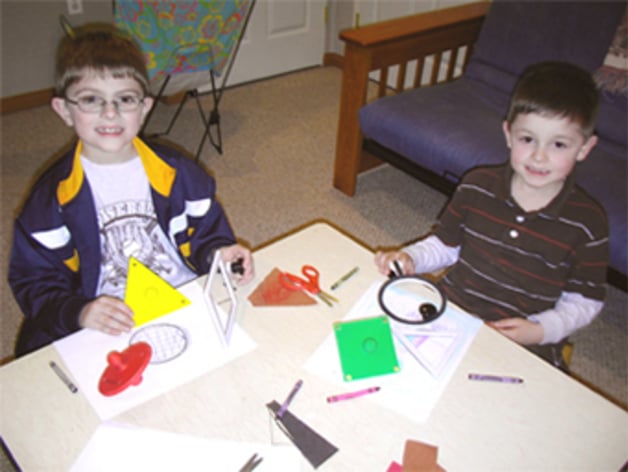
Hexagon tracer
thingiverse
My designable shape models are easily printable with minimal plastic usage. I created these templates to be straightforward and easy to understand so anyone can resize them as needed. Print Settings Printer: CraftBot Rafts: No Supports: No Resolution: Optimal Infill: 30% square Notes: I optimized this model for printing in ABS with maximum settings. It's recommended to use a skirt with an offset of 0mm (also known as a brim) with 2-5 loops for ABS. As shown from the photo, increased infill can be beneficial as well. How I Designed This For this project, I used a free program from Autodesk called TinkerCAD. As a long-time user of AutoCAD, a desktop drafting program from the same company, I chose to use TinkerCAD to make it easier for educators and learners to replicate my design. TinkerCAD is awesome because it's not only free but also easy to use and runs in your browser with built-in instructional lessons. www.tinkercad.com To start this project, I used the geometric shape titled 'hexagonal prism' on TinkerCAD. I then adjusted the height to 2mm to get a strong yet minimal model. Next, I used Shift+click to adjust it until the long side was approximately 120mm so that the model would be large enough to use and fit on various printers, including MakerBots. Then, using alt+click, I made another hexagon and resized it to 110mm using shift+click. I moved it to the center of the original hexagon and used the hide and group features to complete my design. Project: Hexagon Tracer Objective The purpose of this project is to help kids learn about shapes through hands-on activities by tracing, cutting, and coloring them. Audience The intended audience for this project is kids aged 3+ with adult supervision. However, these models are suitable for all ages who want to keep their craft materials handy. Preparation Teachers wishing to modify the size of their own triangles need access to a computer with internet access and a free TinkerCAD account. Tinkercad is easier to use with a mouse than with a tablet or trackpad, so computer mice are recommended. No prior 3D design experience is required for students, although familiarity with Tinkercad would be helpful. Kids should have access to crayons/color pencils, safety scissors, and be supervised at all times. Step 1: Adjust Size If needed, adjust the size of your project by downloading the model from here and uploading it to www.tinkercad.com. Press shift+click on one corner to resize the object. Remember that you can adjust the snap in the bottom right corner for more or less accuracy. Step 2: Print! Check out the recommended settings at the beginning of this project. It's a good idea to let kids participate in this process, but remember to keep them safe from hot printer parts. Step 3: Trace Either have your kid(s) hold down the shapes and trace inside or outside them, or tape the shapes down for stability. Step 4: Cut Assist your kid(s) in cutting out the shapes using safety scissors. Using non-straight scissors can add more fun to the process. Step 5: Color If kids traced inside the shape, they may have already colored it completely. This step can also be used to teach them about colors and their properties. Results Kids will learn about shapes, colors, and scissor safety through this project, giving them a head start for their academic careers!
With this file you will be able to print Hexagon tracer with your 3D printer. Click on the button and save the file on your computer to work, edit or customize your design. You can also find more 3D designs for printers on Hexagon tracer.
